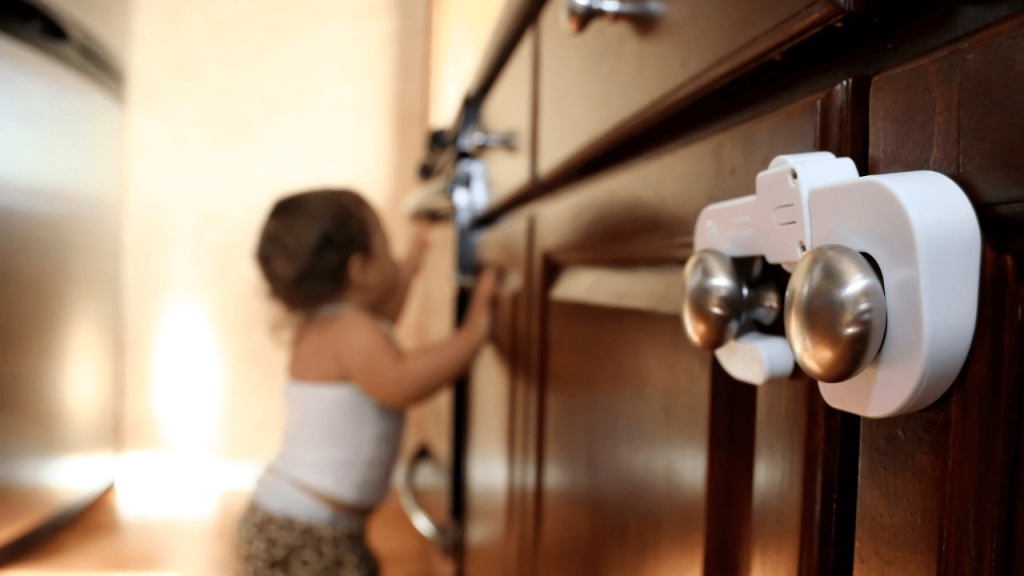Safe playtime is essential for every child’s growth and development. It allows them to explore, learn, and have fun in an environment where they feel secure.
However, creating a safe play environment isn’t always as simple as it seems. From hidden hazards to unpredictable accidents, ensuring your child’s safety during playtime requires preparation and attention.
In this blog post, we’ll share 10 practical tips to help you create a safe playtime environment at home. These tips will make playtime fun, worry-free, and safe for your children!
1. Designate a Safe Playtime Area
The first step to ensuring safe playtime is designating a specific area in your home for your child to play. Choose a spot that is free from clutter and potential hazards. Soft flooring, such as mats or rugs, can provide a safer surface in case of falls.
Make sure the space is well-lit, allowing you to supervise easily and giving your child a clear view of their play area.
2. Choose Age-Appropriate Toys
Not all toys are suitable for every child. Selecting age-appropriate toys is key to maintaining safe playtime. Always check the packaging for recommended age ranges and ensure toys don’t have small parts that can become choking hazards for younger children.
Look for toys with safety certifications, and avoid older, hand-me-down toys that may not meet current safety standards. Regularly inspect toys for wear and tear to ensure they remain safe to use.
3. Supervise Playtime Actively
Supervision is one of the most important factors in maintaining safe playtime. While it’s great to encourage independence, young children still need a watchful eye to prevent accidents.
Active supervision means more than just being in the same room. Stay attentive and ready to step in if needed. For older children, check in regularly to ensure everything is going smoothly.
4. Secure Furniture and Heavy Objects
Children are naturally curious, and they may try to climb on furniture or pull objects down. To create a safe playtime environment, secure heavy furniture like bookshelves and TV units to the wall.
Keep cords, decorations, and other unstable objects out of reach. This will reduce the risk of accidents caused by tipping or falling items.
5. Keep Dangerous Items Out of Reach
Playtime areas should be free of items that can harm your child. Cleaning supplies, medications, sharp objects, and small household items should be stored in locked cabinets or high shelves.
If your child’s play area is close to the kitchen or other risky spaces, consider installing baby gates to keep them safely contained.

6. Educate Kids on Safety Rules
Teaching children basic safety rules is an effective way to ensure safe playtime. For example, let them know not to run indoors, climb on furniture, or play with sharp objects.
Modeling safe behavior yourself can reinforce these lessons. Children are more likely to follow the rules when they see adults practicing them too.
7. Regularly Inspect Toys and Play Equipment
Regular inspections are vital for maintaining safe playtime. Toys can break over time, exposing sharp edges or loose parts. Check your child’s toys and outdoor play equipment frequently to ensure they are in good condition.
If you notice any damage, either fix it immediately or discard the toy to avoid potential injuries.
8. Avoid Small Items for Younger Kids
Small objects can pose a choking risk for toddlers and babies. Coins, beads, buttons, and even small food items should be kept out of their play area.
If your child enjoys crafts or sensory play, make sure the materials are age-appropriate and safe.
9. Teach Kids About Sharing and Playing Nicely
Safe playtime isn’t just about physical safety; it’s also about emotional safety. Teach your child to share toys, take turns, and play respectfully with siblings or friends.
If conflicts arise during group play, step in to guide them toward a positive resolution. This helps prevent emotional distress and promotes healthy social skills.
10. Be Prepared for Emergencies
Even with all the precautions, accidents can happen. That’s why it’s essential to be prepared. Having a well-stocked first aid kit is a must. Include items like bandages, antiseptic wipes, and a thermometer in your kit.
Choking is one of the most common risks for young kids. Having an anti-choking device like LifeVac on hand can be a lifesaver in emergencies. LifeVac is easy to use, requires no training, and can be operated in seconds. It’s designed to give parents peace of mind during safe playtime.
Conclusion
Safe playtime is all about preparation and attention to detail. By following these tips, you can create a fun and secure environment for your children to explore, learn, and grow.
At LifeVac, we are dedicated to helping families stay safe. Visit our website to learn more about how you can protect your loved ones with our anti-choking device.



